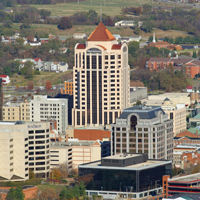
 |
|
 |
History of 911 
History of 911 in the Roanoke Valley The very first telephone call ever made was a call for help. When Alexander Graham Bell spilled battery acid on himself, Thomas Watson heard him say, "Mr. Watson, come here. I want you!" On March 10, 1876, there were only two phones in the world. Today, there are billions of phones and billions of people who may be in need of help. The 9-1-1 concept is simple: let callers dial a universal number to reach local emergency personnel. The first such system was implemented in Great Britain in 1937, where citizens could dial 9-9-9 to summon police, fire, or medical assistance. American soldiers in England in World War II learned about this number and the military adopted a universal number on all U.S. military bases in the 1950s. In 1957, the National Association of Fire Chiefs lobbied for a universal number that civilians could use to report fires. The President's Commission on Law Enforcement and Administration of Justice and the President's Commission on Civil Disorders echoed this recommendation in 1967. In 1968, AT&T announced that the numbers "9-1-1" would be designated for emergency use nationwide. These numbers were chosen because they were hard to dial accidentally, easy to dial in the dark, easy to remember, and not in use as an office code, area code, or service code. Congress passed legislation ensuring that only the numbers "9-1-1" would be used as a universal number. The first call to 9-1-1 was placed by U.S. Senator Rankin Fite on February 16, 1968, in Haleyville, Alabama. Although this basic system could not provide dispatchers with any information about the caller, the 9-1-1 concept revolutionized emergency response in the United States. Ironically, Haleyville is a tiny town of less than 5000, which today averages about 70 calls to 9-1-1 each month! Nine-one-one availability for the U.S. population since 1968 has grown from 17% in 1976 to 26% in 1979 to 50% in 1987 to 85% today. Approximately 50% of the geographical area of the United States has access to 9-1-1. Ninety-five percent of this access is Enhanced 9-1-1, which gives dispatchers name and location information for each caller. Americans call 9-1-1 about 285,000 time every day, or about 100 million times each year. Almost 80% of these calls are for police emergencies. Estimates indicate that over 25% of 9-1-1 calls are placed via cellular phone. Prior to 1987, Roanoke Valley residents had to call separate seven-digit phone numbers for police, fire and rescue. What's more, the numbers were different in Roanoke, Roanoke County, Salem and Vinton! The four local governments began to meet in 1977 to plan a 9-1-1 system for the Roanoke Valley. In 1984, the Virginia General Assembly passed legislation to allow localities to assess a tax on telephone service to fund the operating expenses of a 9-1-1 system. On October 5, 1987, all four valley municipalities "turned on" Enhanced 9-1-1. Although each locality still answers its own emergency calls, residents in any part of the Roanoke Valley can dial one number for immediate police, fire or rescue response. |
|
||||||||
| City of Roanoke Virginia Office of Emergency Management 713 3rd Street SW, Roanoke, VA, 24016, 540-853-2426 | ||||||||||
| ©2025 FastHealth Corporation Terms Privacy | US Patent Numbers 7,720,998 B2, 7,836,207 |